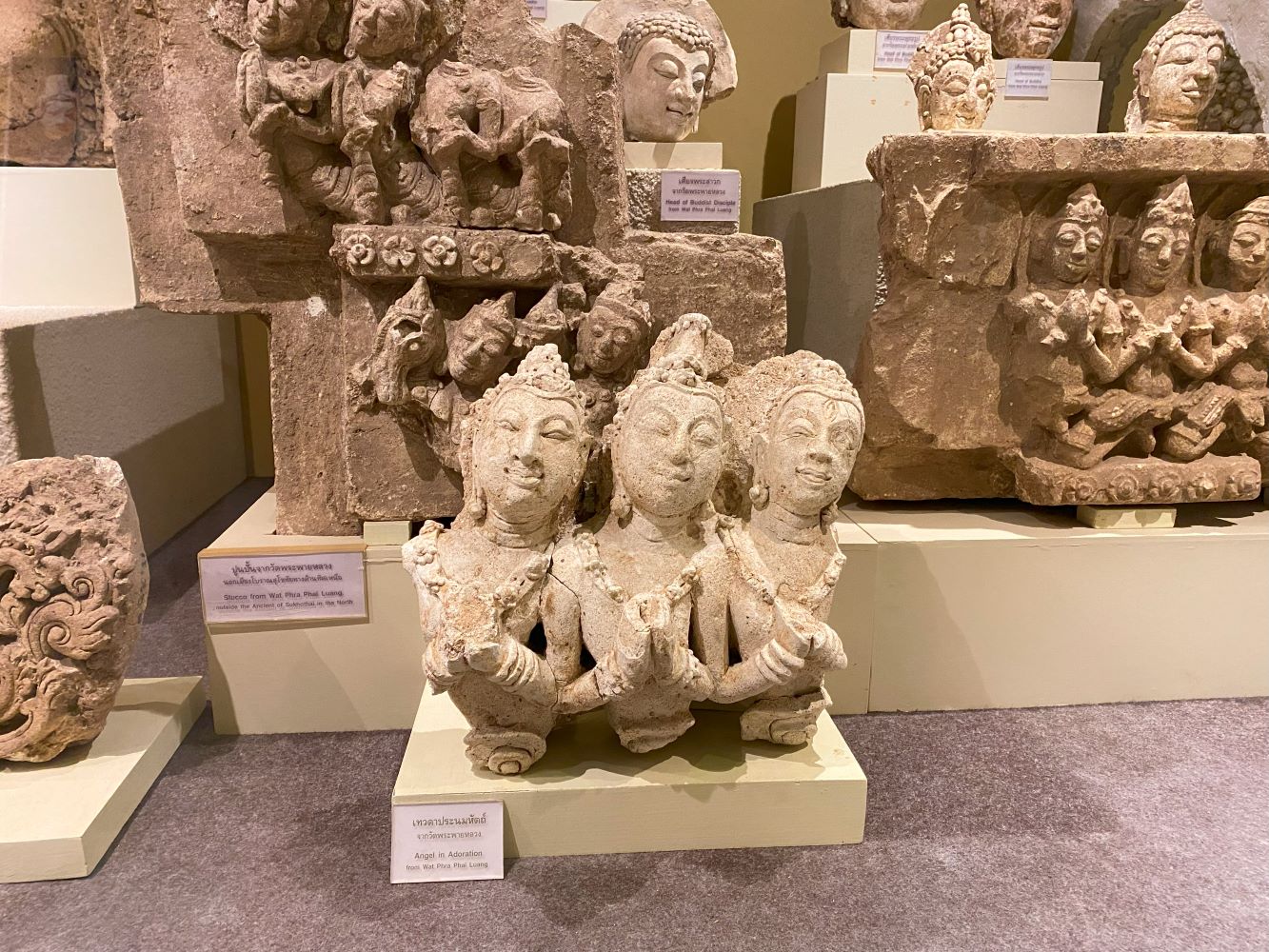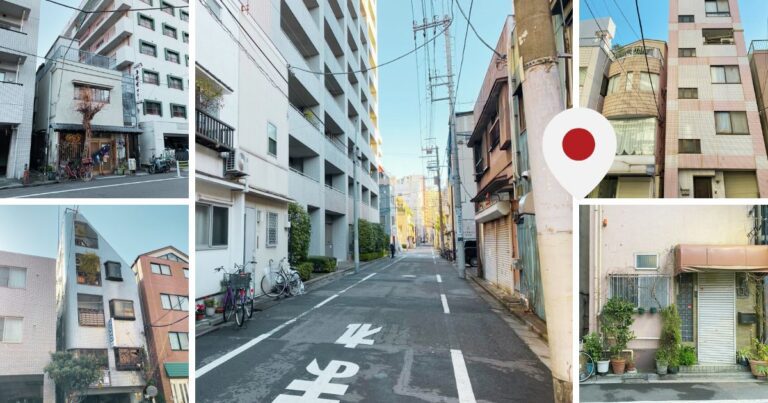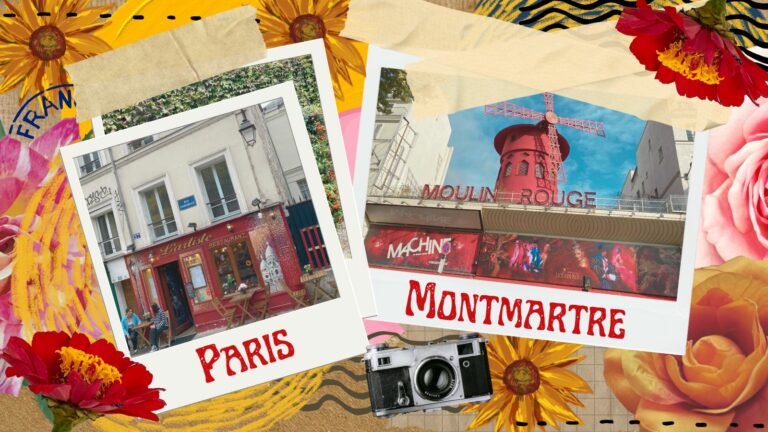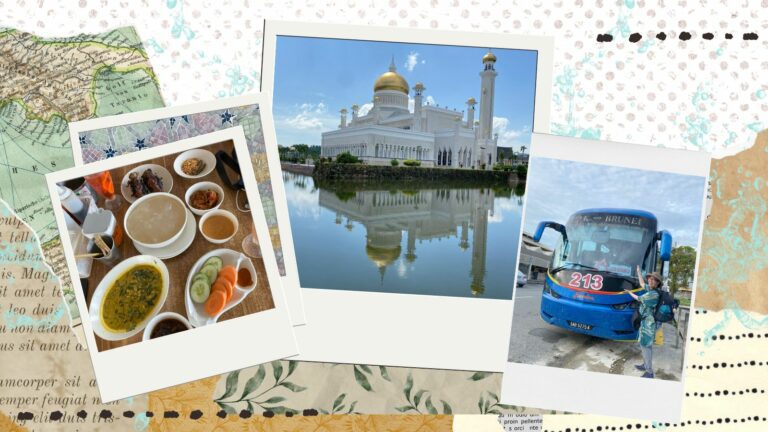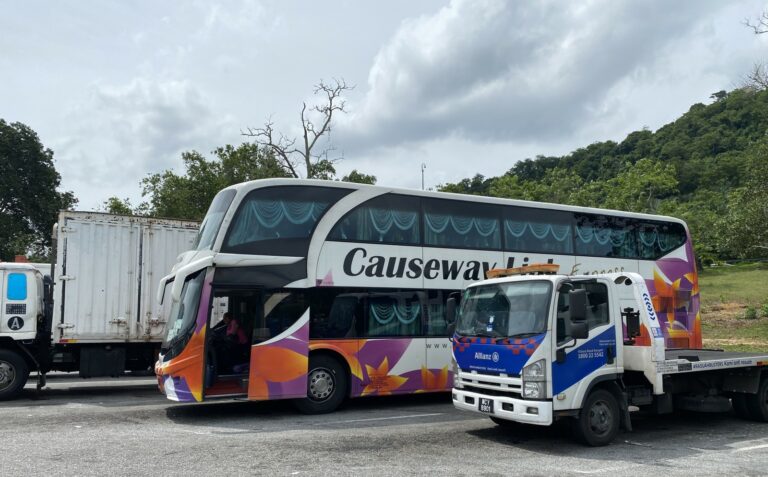Visiting the Ramkhamhaeng National Museum, Sukhothai, Thailand
Ever wondered what it’d be like to peek into Thailand’s golden age? The Ramkhamhaeng National Museum answers that with centuries-old Buddha statues, intricate stucco sculptures, and ancient relics that bring Sukhothai’s history to life.
Sitting right next to the Sukhothai History Park, this museum is a perfect stop for anyone who loves exploring culture, art, and tradition. Even if you’re not usually a “museum person,” it’s worth stopping by to round out your visit to Thailand’s ancient capital.
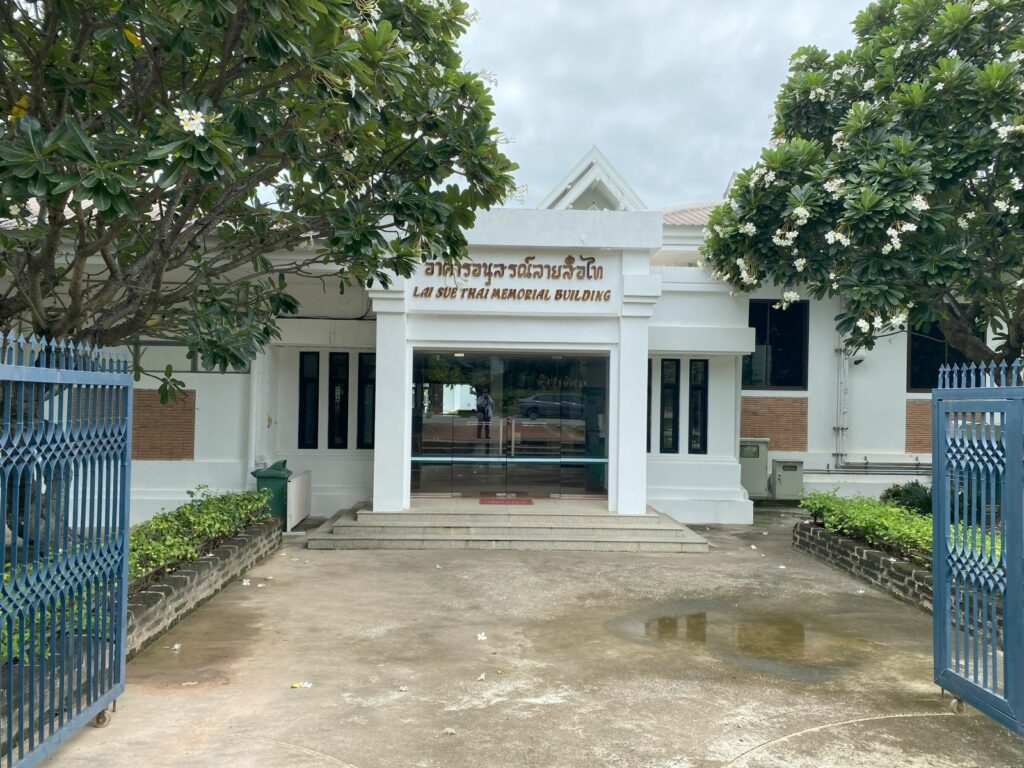
Just Gone Wandering is supported by readers! This post contains affiliate links. If you click on a link and buy something, I get a small percentage at no extra cost to you. Your support helps keep this blog running— thank you! Read full disclosure here.
Know Before You Go: Ramkhamhaeng National Museum
- Address: Mueang Kao, Mueang Sukhothai District, Sukhothai 64210, Thailand
- Plus code: 2P95+43 Mueang Kao, Mueang Sukhothai District, Sukhothai, Thailand
- Phone: +66 5563 3025
- Website: Ramkhamhaeng National Museum
Essential Info
- Hours: 9:00 AM – 4:00 PM every day, closed holidays
- Admission: 150 baht (for foreigners), 30 baht (for locals)
- Recommended Duration: 1-2 hours for casual tour, 2-3 hours for the full thing (mostly if you plan to read the signs in detail)
- Best Times to Visit: Generally any time, as it never seems to be super busy
Entry & Tickets
- Skip-the-line Options: Not needed
- Online Booking: None
- Entry Requirements:
- Bag restrictions: Large bags must be put into a (free) locker
- Security check: None
- Dress code: Recommend following temple guidelines, as there’s quite a bit of religious stuff in here
💡 Pro Planning Tips
- Most people recommend going to the park first, then stopping at the museum in the early afternoon when it’s really hot outside
Building Overview
- Floors: 2 floors in the main museum building
- Main Attractions:
- Lai Sue Thai Memorial Building: history of Sukhothai itself
- Ramkhamhaeng National Museum building: stucco sculptures, walking Buddha statue, Hindu sculptures, Wat Si Chum tunnel, relics from archaeological digs in the nearby park
- More detailed info about the stuff in the museum can be found here
- Suggested Route: Start at the entrance and work your way through the building to the outside parts
Accessibility
- Elevators: Unknown
- Wheelchair Access: Generally accessible but might have some issues getting closer to exhibits due to the layout
Navigation Tips
- Main Pathways: Paved, exterior paths can be bumpy
- Bottleneck Areas: Most exhibits have some kind of weird corner than you can get stuck in, but it’s never busy enough to be a real problem
- Signage: Lots of signs in Thai, most translated to (very dense) English
Facilities
- Restrooms: Outside
- Temperature: Air conditioning in certain locations, otherwise there’s fans
Food & Drink
- Museum Café: None
- Outside Food Policy: Not allowed
- Nearby Options:
- Chandas Historical Garden Restaurant across the street
- ร้านใบตอง Baitong Thaifood Restaurant about five minutes down the street
Available Services
- Bag Storage: Free lockers
- Audio Guides: None
- Gift Shop: None
- Information Desk: Same as ticket desk, at the entrance
Additional Amenities
- Wifi: None
- Photography: Smartphone only, no professional cameras. No tripods, no flash, no video.
- First Aid: None
Special Services
- Language Assistance: None
- Guide Services: Only available for tour groups
💡 Pro Service Tips
- Smart phone photography is allowed for most things, but there’s some signs for specific objects that aren’t allowed to be photographed
Museum Visit Experience
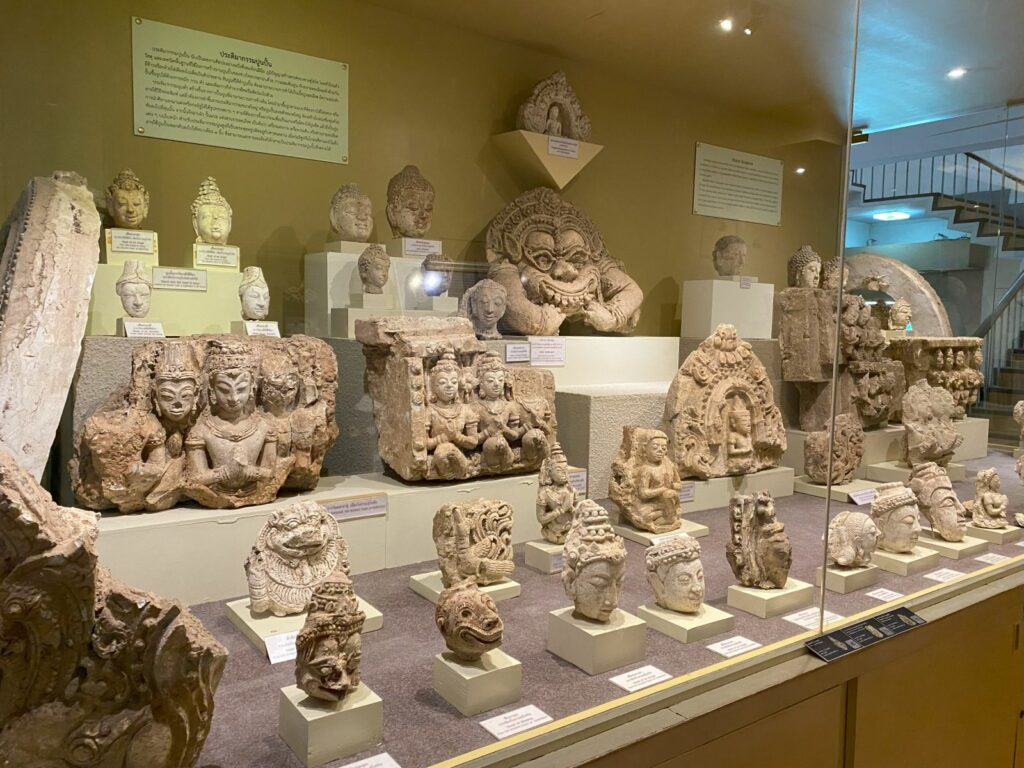
It’s an older museum that’s partially under renovation (as of September 2023), but most of the rooms are open to the public.
There are a few displays on local modern history, but plenty on historical artifacts and information about the nearby temple ruins and the people who built them.
The museum has a particularly excellent collection of stucco sculptures and art! Some are from the nearby ruins and some are recreations. While it’s kind of a bummer the ruins no longer have much of their art, it’s nice to see pieces in the museum and sort of complete the whole “look” of Sukhothai’s history.
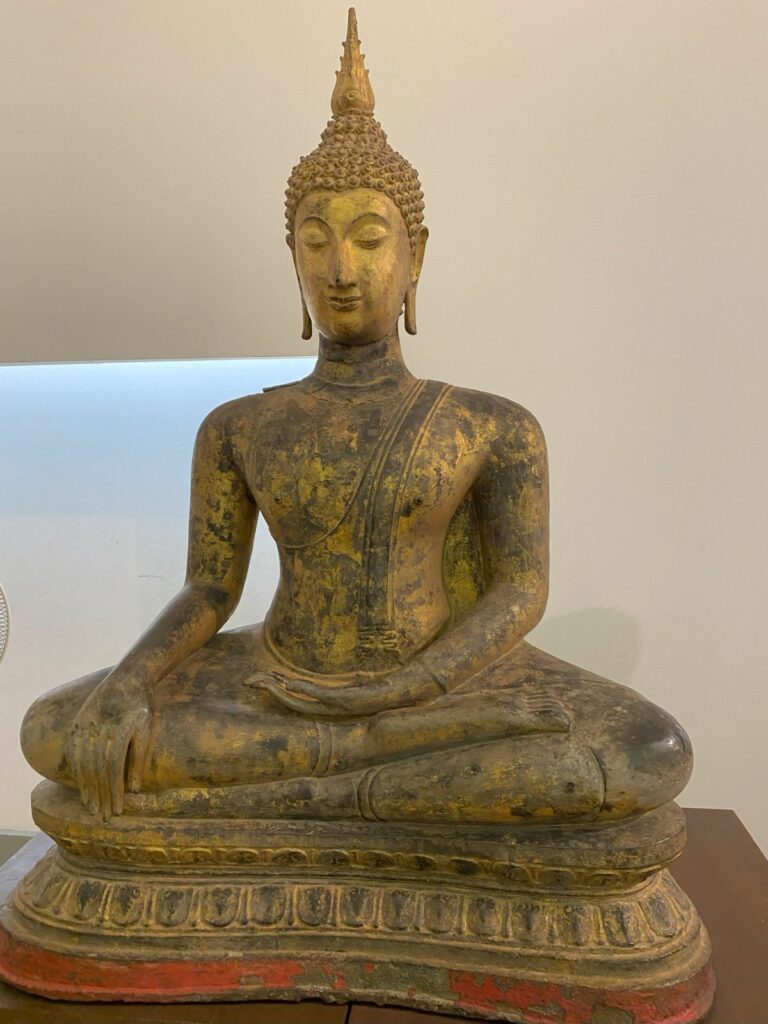
Besides the stucco, there’s several bronze statues, some stonework, and pieces from around the nearby area.
What was interesting about those pieces was they show how the Sukhothai art style changed over time, as local people came into contact with outside cultures. For instance, there’s several big Hindu statues of Shiva and Vishnu, and some older-style Buddhas from the 13th century. They even have some Chinese porcelain which was imported during Sukhothai’s heydey.
There’s also a small outdoor area with larger statues and stucco recreations, and in the back are some apartments for staff and interns.
Well worth visiting to round out exploring the historical park nearby. You’ll need about an hour to see everything, 1.5 hours if you’re reading plaques closely.
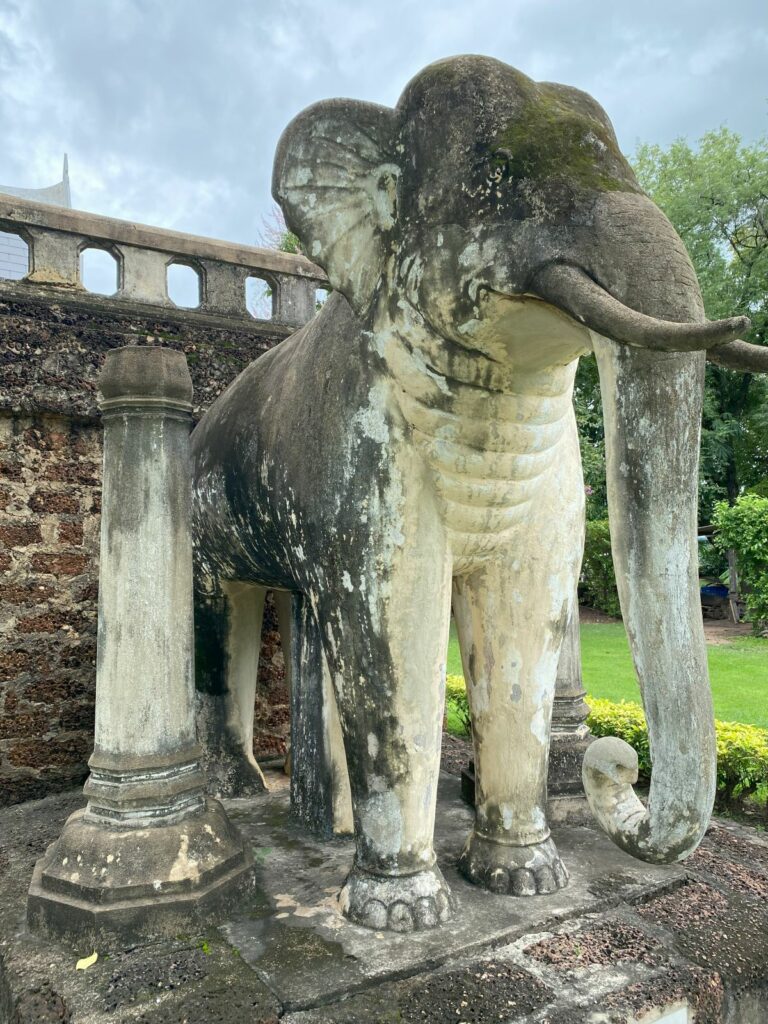

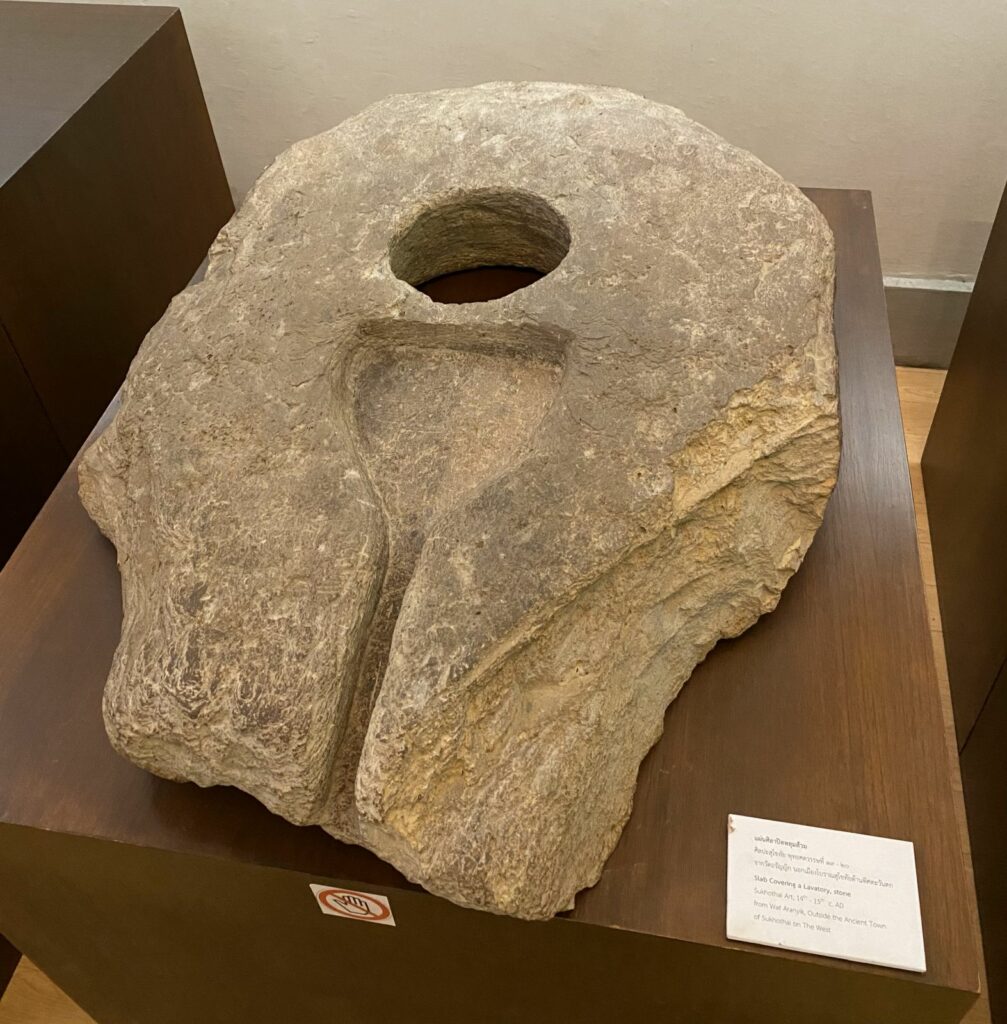
Save on Pinterest



